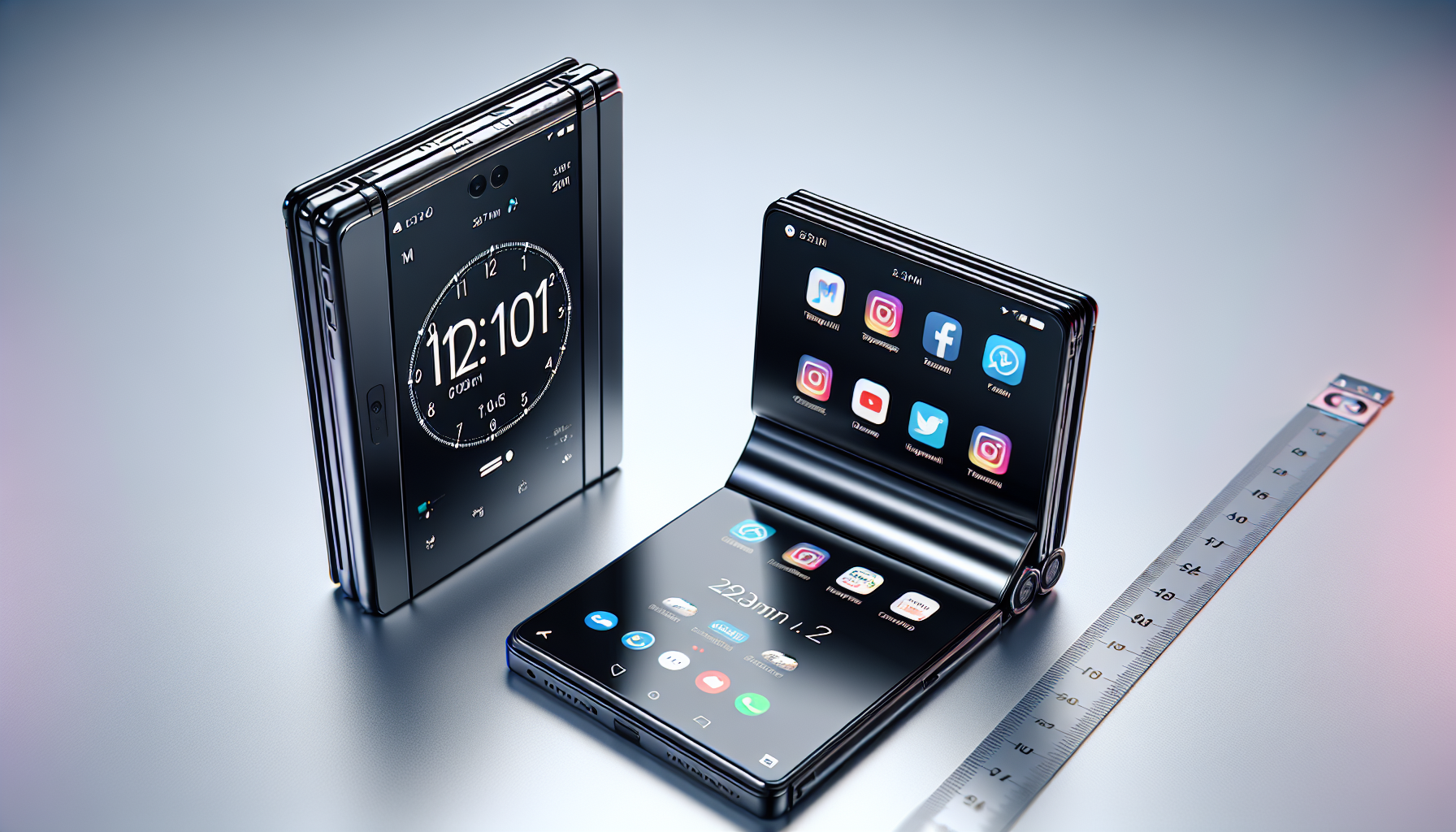 ## The Advancement of Foldable Smartphones: Samsung vs. Motorola
## The Advancement of Foldable Smartphones: Samsung vs. Motorola
Foldable smartphones have significantly evolved since they first emerged, with two key players rising to prominence in this groundbreaking market: Samsung and Motorola. This article explores a comparative examination of their leading foldable devices, highlighting their evolution, market influence, and future possibilities.
Samsung’s Galaxy Flip: A New Era
Samsung’s Galaxy Flip revolutionized the foldable smartphone landscape. In contrast to the bulkier Galaxy Fold that prioritized screen size, the Galaxy Flip emphasized portability and cost-effectiveness. This strategic pivot proved highly successful, with the Flip accounting for 70% of Samsung’s foldable sales in 2021. The triumph of the Flip propelled Samsung’s foldable shipments to 10 million units that year.
Competitive Dynamics and Market Influence
Samsung’s leadership in the foldable sector has triggered heightened competition, resulting in greater device variety and innovation. The company has implemented subtle yet impactful enhancements to its devices, like expanding the Fold’s narrow front screen. Nevertheless, the novelty surrounding foldable smartphones is diminishing, and Samsung is encountering tough competition from newer entrants such as Google’s Pixel Fold and the OnePlus Open.
Motorola’s Surprising Resurgence with the Razr
Initially, Motorola’s entry into the foldable market with the Razr was met with skepticism. The 2020 Razr drew criticism for its steep price and inadequate specifications. However, Motorola has taken lessons from its early shortcomings and has made significant enhancements in its latest Razr+ iteration.
Notable Features and Pricing Tactics
The Razr+ showcases an impressive design, featuring a nearly edge-to-edge 3.6-inch front display, coupled with a more appealing price point. While Samsung’s Flip 6 continues to excel in imaging performance, Motorola’s strategic pricing has established it as a serious competitor. The Razr+ often includes discounts, attracting budget-friendly consumers.
The Global Landscape of Foldable Smartphones
The international foldable market has experienced substantial growth, registering a 49% year-over-year increase in the first quarter of 2024, according to Counterpoint Research. Huawei, despite facing sales restrictions in the U.S., has surpassed Samsung in global shipments due to its transition from LTE to 5G. Motorola has also recorded remarkable growth, seeing a staggering 1,473% rise in global shipments.
Obstacles and Future Outlook
Samsung’s primary challenge now lies in maintaining excitement in the foldable segment and persuading non-foldable users to switch. The high entry prices for the Fold and Flip, beginning at $1,900 and $1,100 respectively, pose significant hurdles. There are speculations that Samsung is developing a more budget-friendly foldable device, which could potentially transform accessibility in foldable technology.
Summary
The foldable smartphone sector is swiftly progressing, with Samsung and Motorola at the forefront. While Samsung enjoys the benefits of experience and brand loyalty, Motorola’s aggressive pricing and enhanced design render it a strong competitor. As the market expands, affordability will play a crucial role in widespread adoption. Both firms must innovate and adjust to stay competitive in this evolving landscape.
Q&A Section
Q1: What distinguishes Samsung’s Galaxy Flip in the foldable market?
A1: The Galaxy Flip stands out for its emphasis on portability and cost-effectiveness, capturing 70% of Samsung’s foldable sales in 2021. Its compact form and lower price compared to the Galaxy Fold have made it a favored option.
Q2: In what ways has Motorola enhanced its Razr model?
A2: Motorola has introduced significant upgrades in the Razr+, featuring improved design, an almost edge-to-edge 3.6-inch front display, and a more competitive pricing approach. These enhancements have positioned the Razr+ as a strong contender in the foldable arena.
Q3: What are the primary challenges that Samsung encounters in the foldable market?
A3: Samsung’s main challenges include keeping the foldable category lively and encouraging non-foldable users to transition. High pricing and growing competition present substantial barriers.
Q4: How has the global foldable market expanded recently?
A4: The global foldable market experienced a 49% year-on-year growth in the first quarter of 2024. Both Huawei and Motorola have observed significant growth, with Huawei surpassing Samsung in global shipments and Motorola achieving a 1,473% increase in shipments.
Q5: What future innovations might we anticipate in the foldable smartphone market?
A5: The next major advancement in the foldable smartphone market is likely to focus on affordability. Speculations suggest that Samsung is developing a more budget-friendly foldable device, which could enhance access to foldable technology for a wider audience.
Q6: How does the imaging capability of Samsung’s Flip 6 compare to Motorola’s Razr+?
A6: Samsung’s Flip 6 surpasses Motorola’s Razr+ in imaging, due to Samsung’s extensive expertise in camera technology. However, Motorola’s competitive pricing and upgraded design contribute to its overall strength in the market.